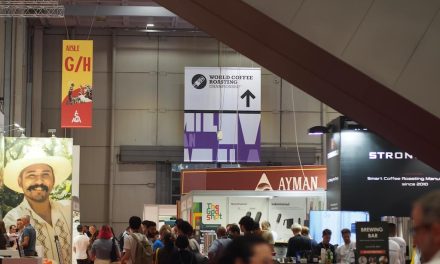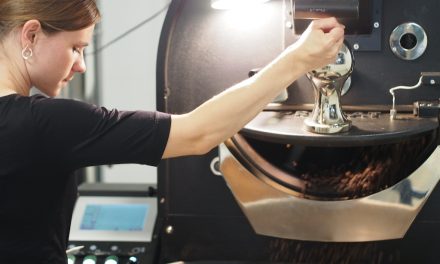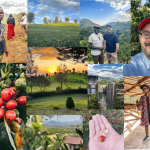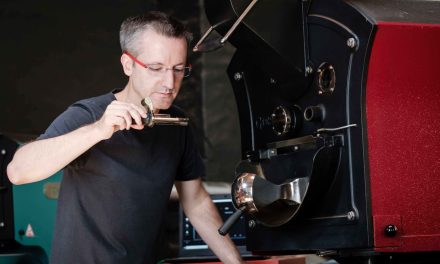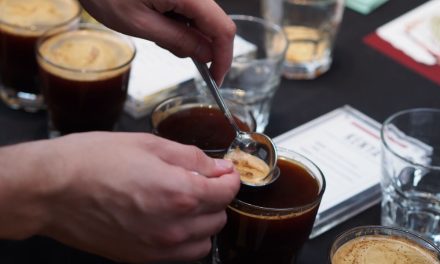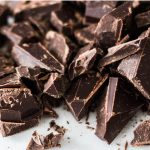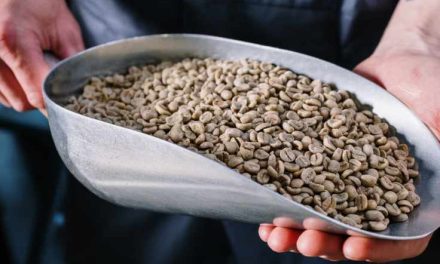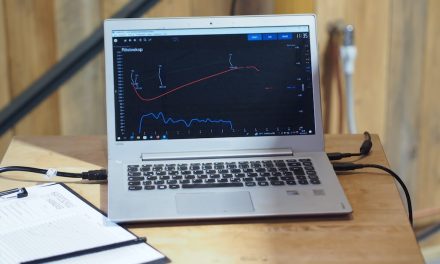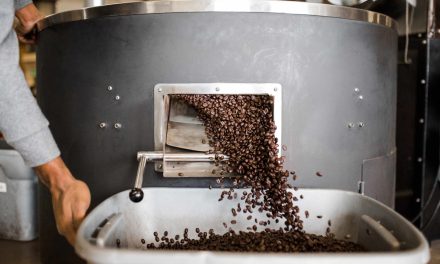
What exactly is a screen size?
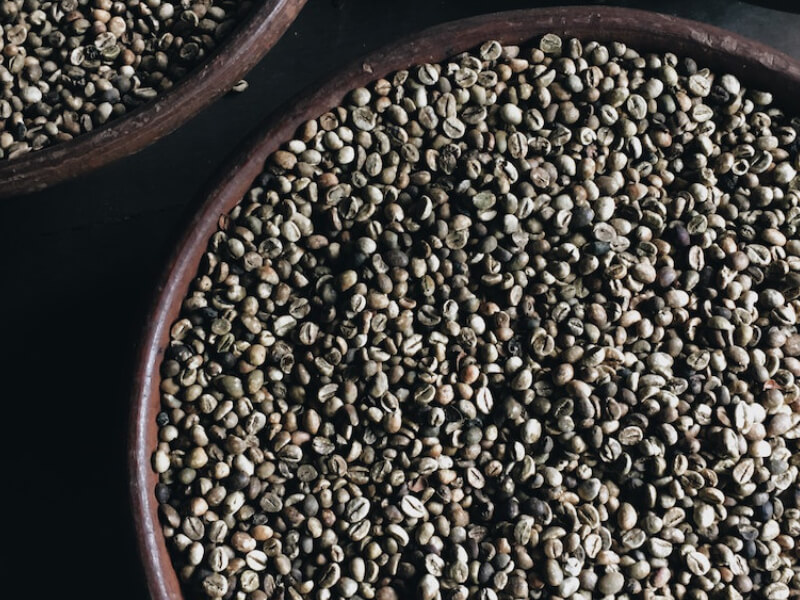
What is the story behind the names Colombia Excelso, Kenya AA and Mexico SHB?
It’s about the “screen size”, i.e. the size of the beans. The benefit of the screen size is best understood if we imagine for a moment that it doesn’t exist: no sieves and no specification “17/18”. And now? Now we would only have the information from the growing countries, such as Kenya AA, Mexico SHB and Colombia Excelso.
So there we are. Perhaps it is quite handy that there is a “screen size”?
What does “Screen Size” mean?
“Screen” in English means a large sieve. In the coffee industry, for example, we sieve ground coffee to determine the particle size. And we also sieve coffee beans to determine their size.
When we sieve coffee beans, we do so with metal sieves. The holes in the sieves vary in size depending on the size of the sieve. The holes in a screen with Screen 17 are larger than in a screen with Screen 14. We speak of a “screen” or the “screen size”.
A “screen” is the equivalent of 1/64 of an inch. A coffee bean with a screen of 18 thus has a size of 18/64 of an inch. One inch corresponds to 2.54 centimeters. The range of “screen sizes” is between 8 and 20.
The “screen size” indicates the size of the sieve through which a coffee bean can still pass before it gets stuck in the sieve below. An 18 sieve has holes with a diameter of 18/64 inch. A coffee bean is thus classified according to its size, in this case Screen 17/18. If you want to be precise, it falls through the 18/64 inch sieve and remains on the 17 sieve. This is why the technical term “17/18 Screen” is sometimes used.
Why go to all that trouble?
The size of coffee beans is one of several criteria we use to classify coffee. The classification determines the price that this coffee can achieve.
We can use all or just a selection of these criteria for classification. “Screen size” is therefore one of many possibilities.
We can use these criteria to classify coffee (based on ICO criteria):
1. growing altitude
2. growing region of a country
3. botanical variety or cultivar
4. method of processing
5. size of bean (“screen size”)
6. number of defects
7. shape and color of bean
8. number of defects allowed
9. density of beans
10. cup profile
What is the significance of this for me as a roaster?
Beans of the same size behave differently in the roasting drum than beans of different sizes.
As a roaster, it is advantageous if the beans are uniform in terms of size, as this makes them easier to roast.
They dry at about the same time, enter the Maillard reaction at about the same time and reach the first crack at about the same time.
The bean appearance becomes uniform in roast color and bean size.
Beans of different sizes enter the various phases of roasting at different times.
With the result that some beans are already in the second crack, while others have not yet reached the first crack.
The roast would be uneven in every respect: the roast color of the beans would vary among themselves, and the different sizes would also be apparent.
Colombia Supremo, Kenya AA and Mexico SHB – What Size Are They?
Some coffee-producing countries use their own classification systems or their own terms to categorize coffee into different sizes.
In Latin and Central America, sizing coffee beans often goes hand in hand with processing them for different target markets.
Let’s look at two examples.
Example 1
Guatemala prepares its coffee for the United States of America as “AP – American Preparation”. There are a number of requirements for this, including a screen size of 13 and larger (100 percent).
The specifications for the European market stipulate a screen size of 15 and larger (a maximum of 5 percent of beans may be size 14).
The “Gourmet Preparation” contains the requirement of screen size 16 or larger in terms of bean size (a maximum of 15 percent size 15 beans are allowed), as well as no shells (elephant ears) or peaberries (pearl beans).
Example 2
Colombia Supremo stands for beans with size 17/18, if it is a Colombia Supremo 17/18. A maximum of 5 percent smaller beans are included, which, however, must still be larger than Screen 14.
If our coffee is a Colombian Supremo screen 18+, then a maximum of 5 percent of the coffee beans in this coffee may be smaller than screen 18, as long as they are larger than screen 14.
If we have the Mexico SHB coffee in front of us, “SHB” stands for “Strictly High Grown” and in Mexico refers to a height of 1,200 meters above sea level. It is the highest level in Mexico. If we have an “EP – European Preperation” in front of us, we will find beans with screen 17 in the coffee bag.
Where would we be without Screen Size?
The Screen Size is an objective measurement that is understandable and verifiable for everyone. This is quite helpful, because otherwise, with regard to the characteristic “size” of a coffee bean, only the coffee-producing countries would exist.
As buyers, we – or our green coffee traders – would be confronted with a wide range of terms, such as Grade 1 (Ethiopia), Supremo (Colombia), Strictly High Grown (Guatemala, Nicaragua or Costa Rica), AB (Kenya, Papua New Guinea, India), XXX (Haiti). It is therefore hardly surprising that the use of the screen size was a wish of coffee buyers.
In general, it has been established that larger beans are considered to be of higher quality. The assumption is based on the fact that there is a correlation between size, density and cup profile: the larger the bean, the higher the density, the finer the flavors. However, numerous exceptions confirm this rule.
Bean size is therefore only one of many criteria when selecting the right green coffee. As we saw above, there may be at least nine other criteria for evaluating coffee quality.
Some coffee roasters often prefer a smaller bean to a larger one because the cup profile is a better match for their roastery and concept.

